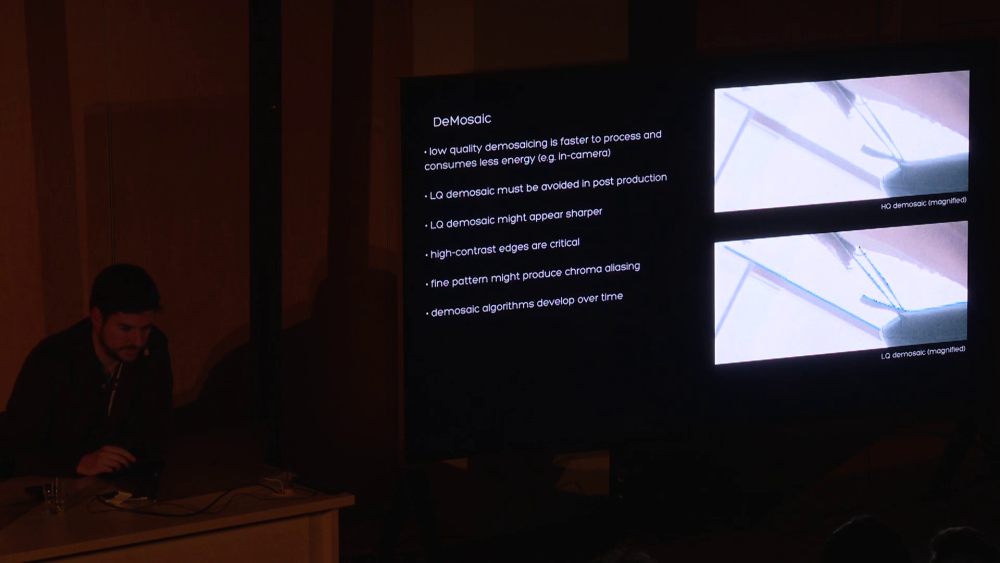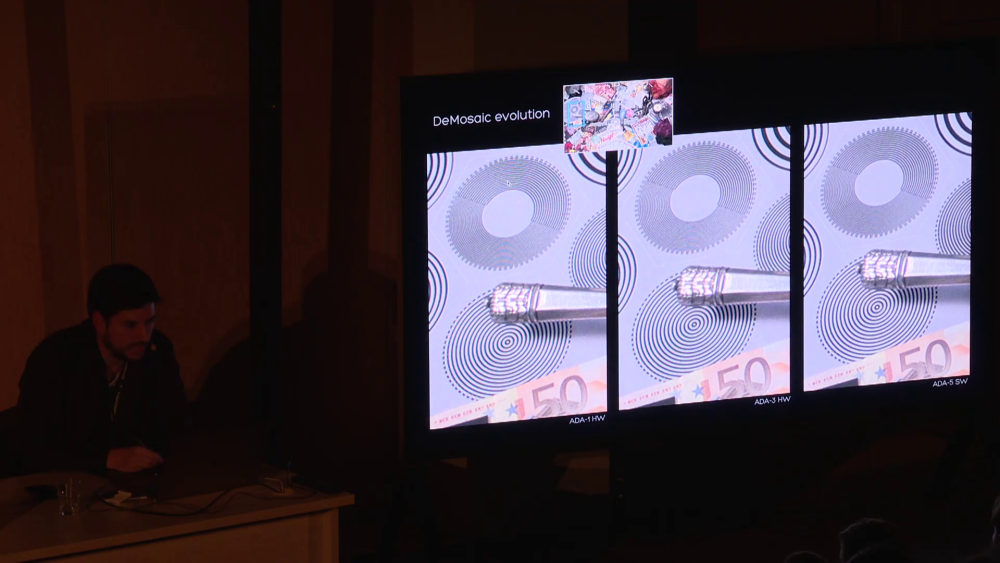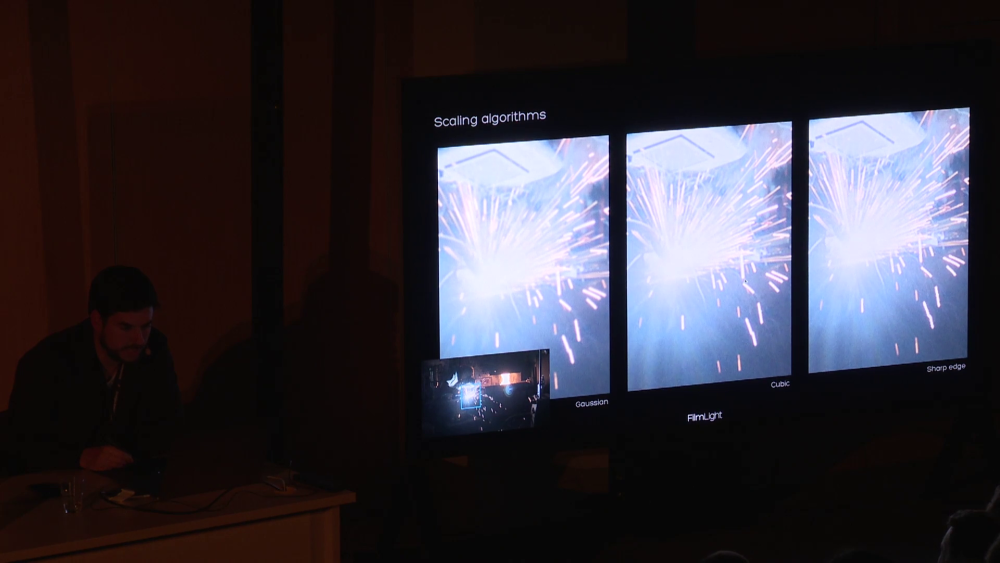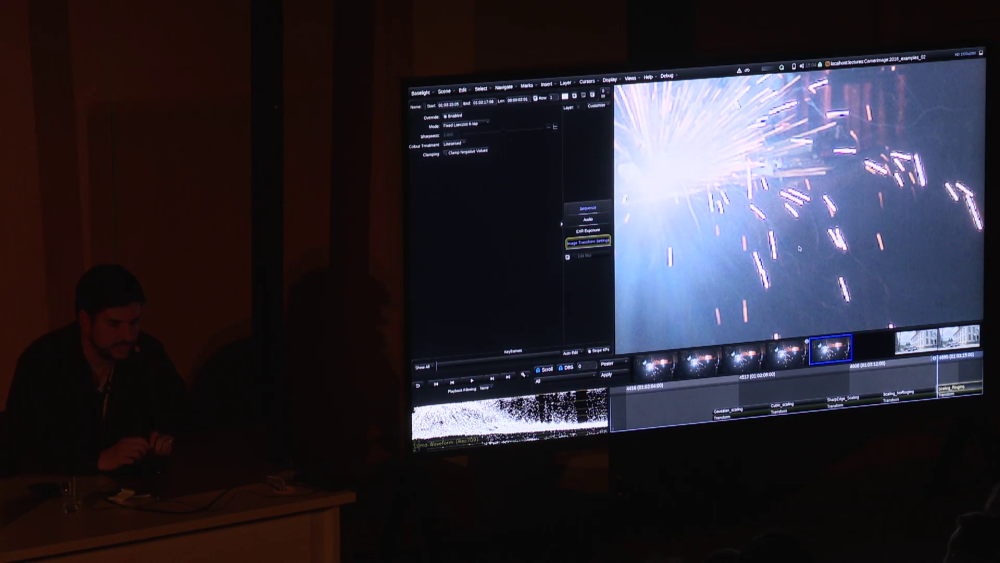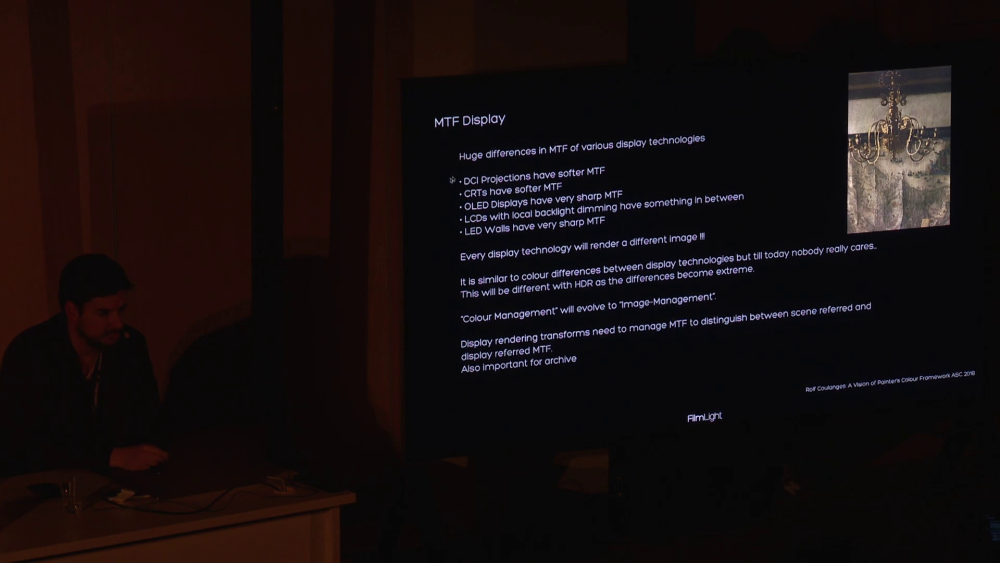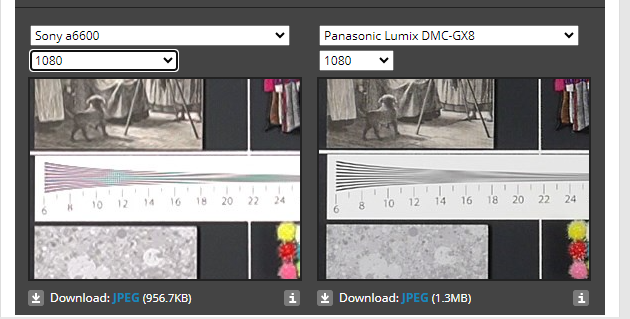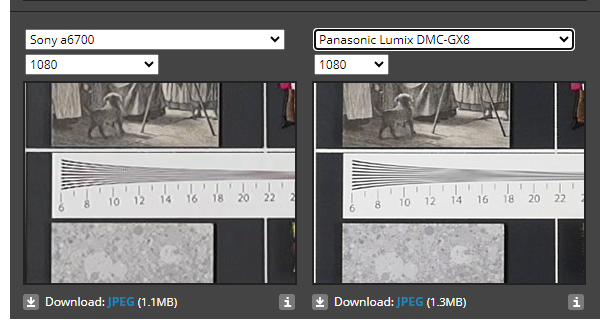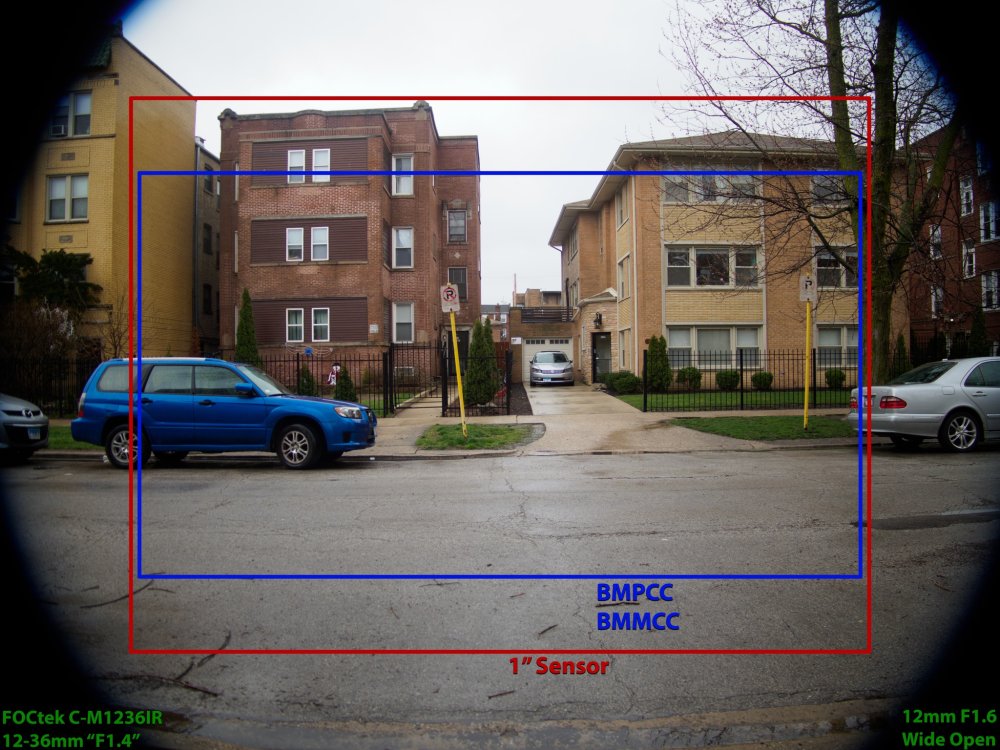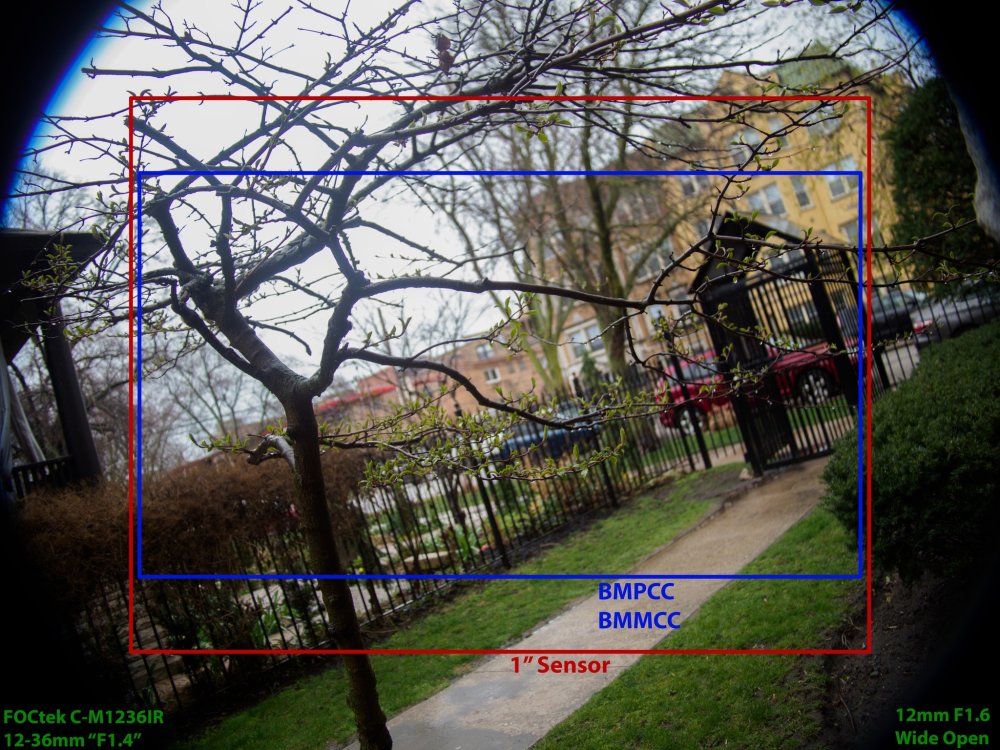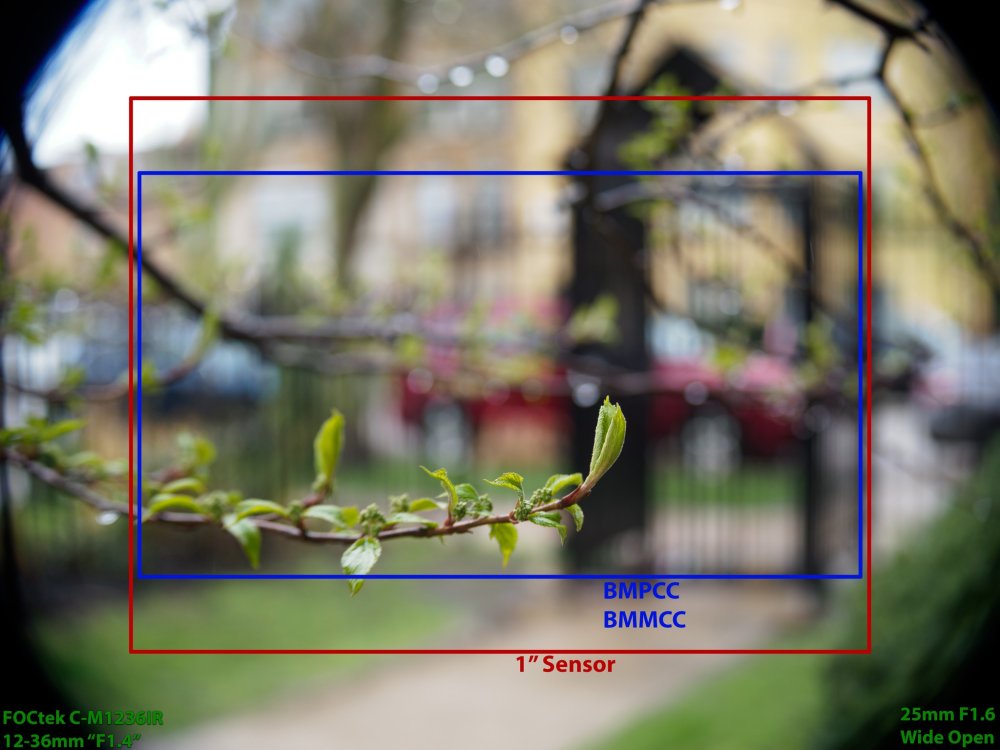Leaderboard
Popular Content
Showing content with the highest reputation on 04/08/2024 in all areas
-
FX30 vs. fx3 (zve1) image discussion
kye and one other reacted to eatstoomuchjam for a topic
Without watching the videos and just looking at the screenshots, it looks like the ZV-E1 was exposed about 2/3 stop brighter than the FX30. Assuming that it's 10-bit footage with a decent codec, you will drag a single slider slightly to the right in post and the images will look much more similar. It is likely that the ZV-E1 has slightly more DR than the FX30 (full frame vs aps-c of a similar generation). In the relatively low-contrast scene that's shown, if the exposure is within a stop or so of (what I think of as) correct, you would never know or care.2 points -
But objects in the footage from both cameras are the same size. If one camera is APS-C and the other is full-frame, and they were using the same lenses, those objects would not be the same size. So maybe the differences you're seeing are due to different lenses being used (or the same zoom lens on both cameras but at different focal lengths), or something was done in post. The person who did this comparison is introducing too many variables for it to be an informative test.2 points
-

FX30 vs. fx3 (zve1) image discussion
eatstoomuchjam and one other reacted to kye for a topic
Most camera comparisons are pretty worthless because you're almost never compare two cameras in the real-world, and even if you are: They'll be from different angles, so will have different content They'll be colour graded, and matching cameras that shoot LOG is pretty easy Things like DR don't matter unless the scene has huge amounts of it, but this is rare these days Videos get compressed to within an inch of their lives by the streaming services, so anything subtle will get crunched You don't need to get that close in colour in order for people to not notice different camera angles not matching perfectly Even if camera angles don't match, it only bothers people if your film is completely crap A much more significant impact on your final film will be the features of the camera, as they make a different on set in terms of efficiency of shooting and your ability to spend any time savings on lighting, directing, etc etc Trying to improve your film by concentrating on the minute differences in cameras is like trying to improve your paintings by concentrating on minute differences in your paint brushes.2 points -
We all know that cameras produce (sometimes dramatically) different images and image quality, and yet we also know that within a given price range those same cameras typically use the same sensors from Sony and are recording to the same codecs in basically the same bitrates. It's maddening! So, WTF is going on? Well, I just came upon this talk below, which goes through and demonstrates some of the inner workings in greater detail than I had previously seen: It's long, but here's my notes... Firstly, how you de-mosaic / de-bayer the image really matters, with some algorithms being higher quality and require higher processing power: (Click on the images to zoom in - quality isn't the best but the effects are visible) If you're not shooting RAW then this will be done in-camera, and if your manufacturer skimped on the processor they put in there, this will be happening to your footage. If the camera is scaling the image, then the quality of this matters too: and if the scaling even gets done in the wrong colour space then it can really screw things up: There's more discussions in there, especially around colour science which has been discussed to death, but I thought these might be illuminating as it's not something we get to see that much because it's buried in the camera and typically it's not something we can easily play with in the NLE. All these add up to a fundamental principle that I have been gradually gravitating towards. If you're shooting non-RAW then shoot in the highest resolution you can shoot in, and just un-sharpen (blur) the image in post. Shooting in the highest resolution means that your camera will be doing the least downscaling (or none), and most glitches and bad processing will be at the pixel-level, which means that the higher the resolution the smaller those glitches and errors compared to the size of the image, and un-sharpening de-emphasises these in the footage. You might notice that all of these shortcomings make the footage sharper, not duller, so the errors have made your footage sharp but in a way that it never was - it's fictional sharpness. Also, the more modern displays are also themselves becoming sharper, so it's no wonder that footage all now looks like those glitch websites from the late 90s that were trying to be cool but looked like a graphic designer threw up into them... FilmLight (who make BaseLight which is the Resolve competitor that costs as much as a house) seem to be on a mission to get deeper into the image and bring along the industry on that journey, and I'm really appreciative of their efforts as they're providing more insight into things we can do to get better images and get more value from our limited budgets.1 point
-
As an electronics design engineer who has spent a large a proportion of my career designing video processing and transmission equipment, I find it almost unbelievable how bad the video image processing can be in some hybrid cameras sometimes. For example, look at the amount of false colour and aliasing there is in the FHD from the Sony A6600 versus the (four year older) Pana GX8 in the image below (grabbed from this DPReview video test chart ) Sony has much improved the false colour situation in the recent A6700, but aliasing is still an issue (full test chart ) : I well understand the issues of heat and power consumption in small battery powered devices, but e.g. Fuji and Panasonic can do it much better than Sony in comparable size cameras...1 point
-
I agree with the comments from Kye and bjohn. I think you're getting a bit obsessive about small differences in DR, which in real world usage are unlikely to be significant (or that you'd notice after editing the footage). The two cameras are a bit chalk vs cheese anyway - one is hybrid-targeted, with a higher res sensor, mechanical shutter, a viewfinder, and more control wheels. The other is much more a dedicated video camera with (in theory) better on-board audio, fewer control dials, no viewfinder etc. When you are using a camera, I think things like how comfortable is to hold, how easy it is to operate the controls, how good the stabilisation is, can you customise the operation of the buttons and dials to suit your way of doing things etc., are far more important than small differences in performance. As an example, I held an A6700 in my hands a few days ago, and found it quite awkward to reach the 'record' button without moving my right hand from (for me) it's natural position on the grip. On my G9 and OM-1 I have the record function programmed to one of the front custom buttons (between the grip and the lens mount), which are under my fingertips when I've got my right hand around the grip. If you're at the stage where you are seriously considering buying the A6700, FX30 or ZV-E1, either try and get to a store where you can hold them in your hands, or make sure you buy from a place where you can return it without a problem - you might really like it when it arrives, or the opposite....1 point
-

Magic Lantern update! Original EOS R recording HD 14bit RAW
eatstoomuchjam reacted to kye for a topic
The pro cameras are pro because they have xls, nd, double recording, sci out, etc. It's like saying "I really like my Toyota hatchback. it bests all of my so called super-cars and hyper-cars. if you don't care about acceleration, top speed, braking, cornering, cool factor, etc." 🙂1 point -

FX30 vs. fx3 (zve1) image discussion
eatstoomuchjam reacted to kye for a topic
Also, and I cannot emphasise this enough.... The image SOOC is like looking at the negative film SOOC. It's not fit for direct display, it's not meant to be for direct display, and no-one really cares the differences in the SOOC image unless it appears in the final image. Think of the post-production process as "developing" the image captured by the camera.1 point -
Those are all absolutely KILLER deals... well done!!1 point
-
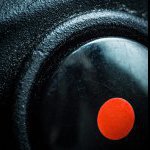
Lenses
PannySVHS reacted to QuickHitRecord for a topic
Actually, that 12-36mm lens I mentioned earlier seems like it might fit the bill, if you are willing to make some modifications. I posted a question about it on another message board and a member named Boris Simović actually had one. He shared these photos (attached), taken with his E-M1 Mark II. To get the lens to work with his MFT body, he removed the rear plate and just screwed on an MFT adapter in its place. It won't focus to infinity at the longer focal lengths yet, but he's going to see if he can work with the adapter a little more to make it work. He says it's somewhat heavy and feels like it needs more lubricant, but I think that the images look very promising. It's available as the FOCtek C-M1236IR in the US for around $300, or $160 on AliExpress (without coupons applied). I am seriously struggling to keep myself from picking up a copy. But maybe you would be interested?1 point -
Buy Bodies - Used or New
eatstoomuchjam reacted to PannySVHS for a topic
I buy used all the time. Greatest deal were two LX10, a bit bumped up but perfectly usuable, for 120 Euro, three years ago, from a youtuber with 150.000 subs. One battery only though.:) Another great deal was an og pocket two years ago or so, with the 20mm 1.7 MK II for 200 or 250 Euro. Last summer I got a Lumix G2 and a G3, together for less than 30 Euro. This year no purchase yet, as planned to stay away from gas this year and as stated in another thread.:)1 point -

Buy Bodies - Used or New
eatstoomuchjam reacted to MrSMW for a topic
My mileage has not varied from this. I think once, max twice in about the same time period so for me, extended warranties would have cost 10x if not 20x as much. Otherwise I do try and purchase used if I can, but only from dealers ie, not places like eBay. Unless it’s some older ‘vintage’ lens type stuff when OK, I have taken a punt. MPB is the only real place in Europe for used (mainstream) kit.1 point

